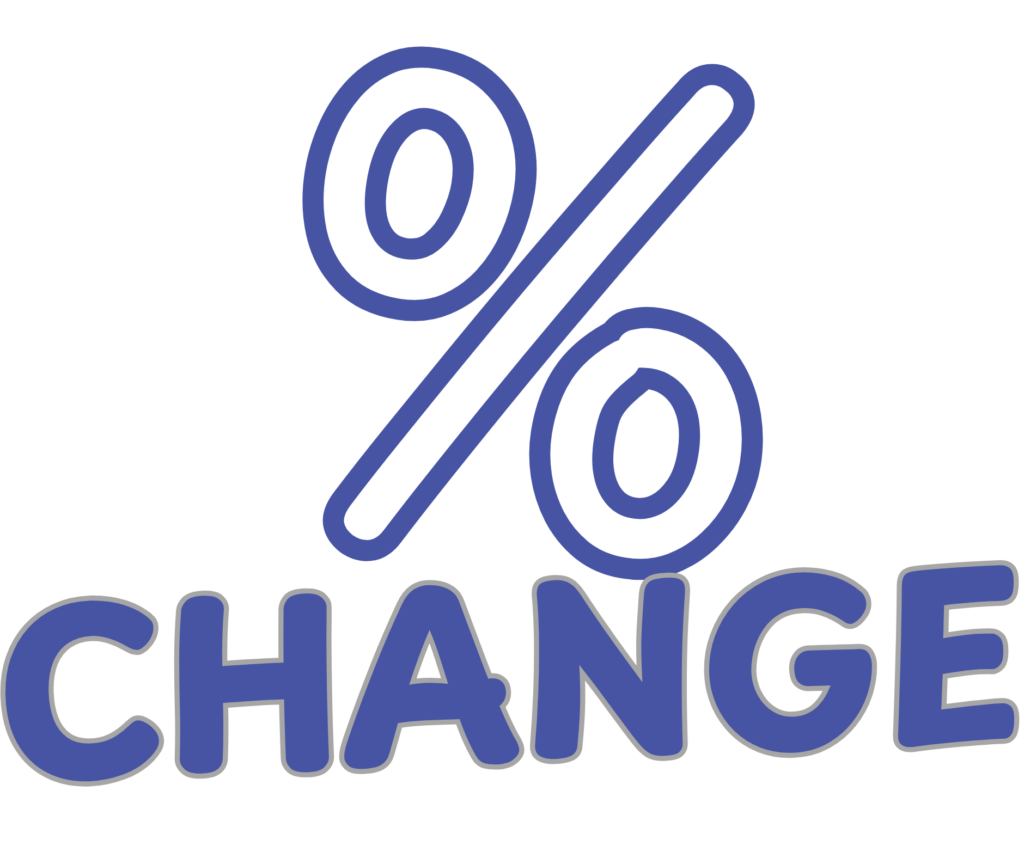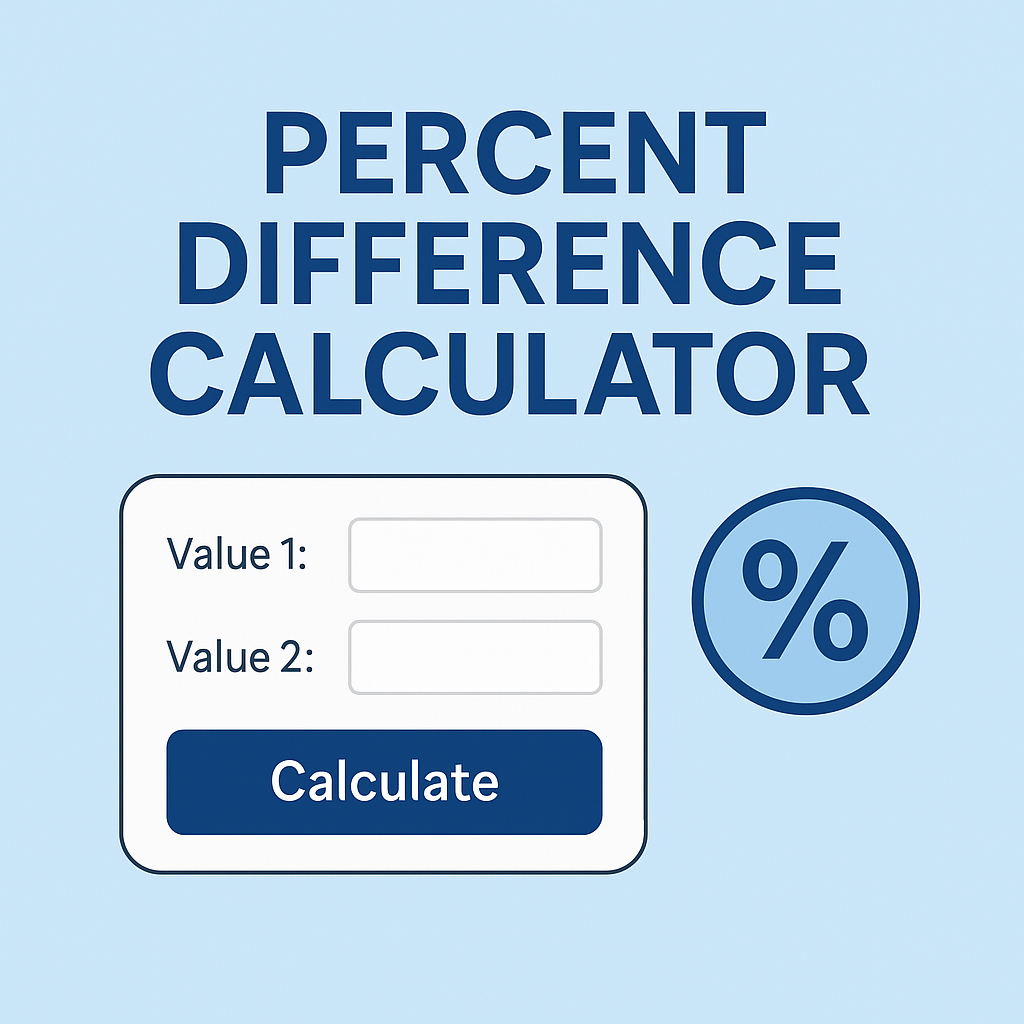What Is Percent Difference?
Percent difference is a simple way to express how much two values differ in relation to their average. It answers questions like:
-
How much more expensive is Product A compared to Product B?
-
What’s the change between two test scores?
-
How different are two experimental results?
Instead of looking at the raw difference, percent difference tells you how big that difference is relative to the values themselves, which makes it easier to interpret and compare.
The Percent Difference Formula
The formula used to calculate percent difference is:
Percent Difference=∣Value 1−Value 2∣(Value 1+Value 22)×100\text{Percent Difference} = \frac{|\text{Value 1} – \text{Value 2}|}{\left(\frac{\text{Value 1} + \text{Value 2}}{2}\right)} \times 100
Let’s break it down:
-
Value 1 and Value 2 are the two numbers you want to compare.
-
You take the absolute value of their difference (so it’s never negative).
-
Then you divide by the average of the two numbers.
-
Multiply by 100 to convert it into a percentage.
This gives you a clear, unbiased measure of how different the numbers are.
Use the Percent Difference Calculator Below
Why do the math by hand when you can calculate it in seconds?
Use our free percent difference calculator below to compare any two numbers instantly.
✅ No sign-up required
✅ Works on desktop and mobile
✅ Designed for students, researchers, business professionals, and everyday use
Easy to Use % Difference Calculator
When Should You Use a Percent Difference Calculator?
Percent difference is used in a wide variety of fields — here are just a few examples:
🔬 Science & Lab Work
When comparing results from different trials or experiments, percent difference helps quantify variations in data. It’s often used in chemistry, physics, and biology.
🧮 Math Education
Teachers and students use it to understand how numbers relate to each other. It’s a foundational skill in algebra and statistics.
💰 Finance & Business
In business and finance, percent difference is useful when comparing pricing models, financial projections, or product cost changes over time.
🛒 Everyday Life
Trying to decide between two similar products? Percent difference helps you determine which one gives more value for the price.
Example: How It Works
Let’s say you’re comparing two monthly electricity bills:
-
January: $120
-
February: $150
Step 1: Find the absolute difference
∣150−120∣=30|150 – 120| = 30
Step 2: Find the average of the two values
(120+150)/2=135(120 + 150) / 2 = 135
Step 3: Divide the difference by the average
30/135≈0.22230 / 135 ≈ 0.222
Step 4: Convert to a percentage
0.222×100≈22.2%0.222 × 100 ≈ 22.2\%
So, your February bill is about 22.2% different from January’s.
Percent Difference vs. Percent Change
It’s easy to confuse percent difference with percent change. While they sound similar, they measure different things:
-
Percent Change compares an old value to a new value and shows growth or decline relative to the starting point.
-
Percent Difference compares two values equally — without assuming one came first.
If you’re analyzing data where neither number is the “starting value,” percent difference is the more accurate choice.
Why Use a Calculator Instead of Doing It Manually?
Even though the formula isn’t too complex, doing the math manually can still lead to errors — especially when working with decimals or very large numbers. A calculator removes the risk of mistakes and saves you time.
Plus, when you use an online calculator:
-
You don’t need to memorize the formula
-
You can make quick comparisons on the go
-
It’s mobile- and user-friendly
Final Thoughts
Whether you’re crunching numbers for school, managing business data, or making smart shopping decisions, a percent difference calculator is a powerful tool to keep in your back pocket.
It helps you cut through the numbers and see the real comparison in seconds — no spreadsheet or math degree required.
Try the calculator now and take the guesswork out of your comparisons!

